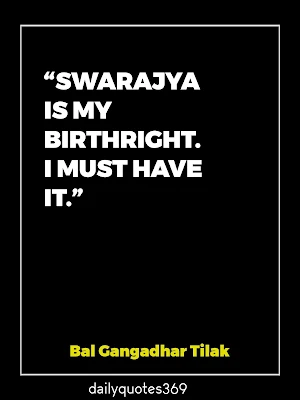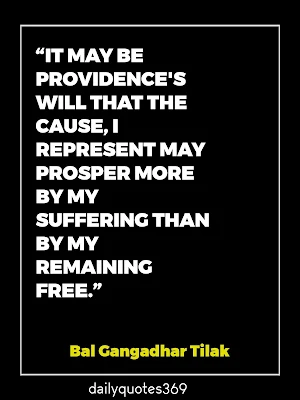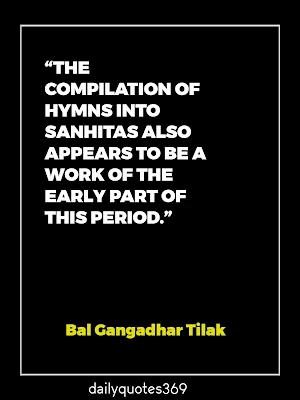12 Inspirational Quotes Of Bal Gangadhar Tilak.
Where Did Bal Gangadhar Tilak Was Born And Grow Up?
Keshav Gangadhar Tilak mainly known as Bal Gangadhar Tilak was born on 23rd July 1856 at Ratnagiri district, Bombay state (Maharashtra, India), India, in Marathi Hindu Chitapavan Brahmin Family. He grows up in his village Chikhali and at age of sixteen, his father died, after few days he got married ‘Satyabhamabai’ in 1871.
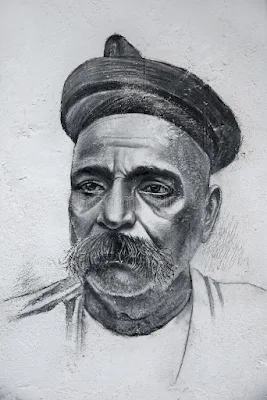 |
| Bal Gangadhar Tilak |
Where Did Bal Gangadhar Tilak Completed His Education and Degrees?
In 1877 he completed his bachelor's degree in mathematics and Sanskrit from the Deccan College Of Pune. And after that, he left his M.A. course of study midway to join the L.L.B. course. In 1879 he also completed his L.L.B. Degree from Government Law College at Mumbai and joined a private school as a teacher to teach mathematics in Pune.
What is the Contribution of Bal Gangadhar Tilak In Independence Activity?
Bal Gangadhar Tilak was the first leader of the Indian independence movement. Tilak belonged to an extremist faction of the Indian National Congress (INC). He was one-third of the ‘Lal Bal Pal’ trio of extremist leaders. Lal Bal Pal refers to Lala Lajpat Rai, Bal Gangadhar Tilak, and Bipin Chandra Pal. They were the prominent leaders of the Swadeshi and Boycott movement. Tilak was the founder of the Deccan Education Society in 1884. The main aim of this society is to educate the masses, especially in the English language because Tilak and her associates consider English to be powerful weapon dissemination of liberal and democratic ideals. Through this, he is also one of the founders of the Fergusson College in Pune In the year 1885. In 1880-1881 Tilak started two weeklies 'Kesari' and ‘Maratha’ in English with editor Gopal Ganesh Agarkar. By this movement, Tilak was known as the ‘awakener of India’. In 1894 Tilak started celebrating the festivals of ‘Ganeshoustav’ and this festival was celebrated for several days with processions, music, and food. Tilak found the ‘Samadhi of Shivaji’ (Maratha Great Warrior) at Raigad Fort. In 1895 Tilak founded the ‘Shree Shivaji Fund Committee ’ for the celebration of ‘Shiv Jayanti’ or the birth anniversary of Shivaji. Tilak uses this agitation of celebrating events like Ganeshshoutav and Shivajayanti to build a national spirit beyond the circle of the educated elite in opposition to colonial rules. Tilak propagated Swadeshi Movements and encourage people to boycott the foreign goods and he established the Bombay Swadeshi Store with the help of Jamshedji Tata. In between 1908-1914, Tilak spends 6 years in Mandalay Prison in the case of sedition for defending the action of revolutionaries Khudiram Bose and Prafulla Chaki.
 |
| The Lal Bal Pal Trio |
What Are The Achievements Of Bal Gangadhar Tilak?
The British colonial authorities called Bal Gangadhar Tilak "The father of the Indian unrest." He was also conferred with the title of "Lokmanya" (accepted by the people) and also known as ‘Lokmanya Tilak.’ In tribute to Bal Gangadhar Tilak, Mahatma Gandhi called him “The Maker of Modern India” and Jawaharlal Nehru described him as “The Father of the Indian Revolution.”
Where Did Bal Gangadhar Tilak Die?
Bal Gangadhar Tilak died on 1 August 1920 at age of 64, in Bombay, Bombay State, British India nowadays this place is known as Mumbai Maharashtra India.
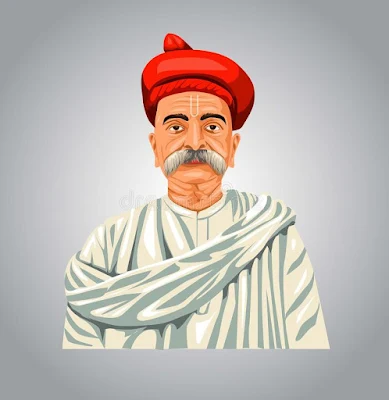 |
| Painting of Bal Gangadhar Tilak |
12 Best Inspirational Quotes Of Bal Gangadhar Tilak.



